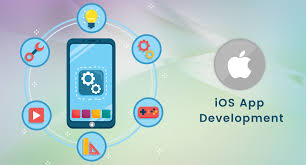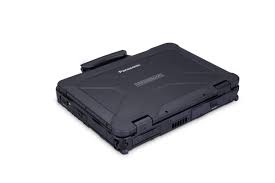In today’s fast-moving world of technology, system designs have become more complex across various industries. From audio visual installations and broadcast studios to industrial automation and telecommunications, professionals need clear documentation of how signals move through their systems. This is where Signal Flow Diagram Software plays a key role. The right software not only helps you map out signal paths but also simplifies installation, maintenance, and troubleshooting. But with so many options available, how do you choose the right Signal Flow Diagram Software for your specific industry? In this blog, we will guide you through the factors to consider when selecting the best tool for your needs.
Understanding what Signal Flow Diagram Software does
Signal Flow Diagram Software allows users to create visual representations of how signals travel through systems. These diagrams show the connections between sources, processors, routers, and outputs. They include details like signal direction, connection types, and device labels. A good Signal Flow Diagram Software helps ensure that everyone involved in a project can understand the system at a glance, from design and installation teams to operators and maintenance staff.
Identify your industry and its unique needs
The first step in choosing the right software is to consider your industry. Different industries have different requirements when it comes to signal flow diagrams.
Audio visual and broadcast
AV and broadcast professionals often deal with complex systems involving audio, video, control signals, and network connections. They need software that can handle large numbers of devices, support AV-specific symbols, and integrate with real-world product data.
Industrial automation
Engineers in automation may focus on signal flow diagrams that include sensors, controllers, actuators, and communication protocols. These diagrams often need to follow strict standards and show process flows in detail.
Telecommunications
Telecom professionals need software that can map signal paths across network infrastructure, showing equipment like switches, routers, and servers along with connection types and bandwidths.
Live events and entertainment
Designers in this sector might look for software that integrates signal flow diagrams with stage layouts or venue plans, with a focus on flexibility and quick revisions.
Understanding your industry will help you choose software that offers the right features and templates.
Key features to look for in Signal Flow Diagram Software
Once you have identified your industry’s requirements, look for software that offers these key features.
1. Industry-specific symbols and libraries
Good Signal Flow Diagram Software should provide standard symbols for your field. For example, AV professionals benefit from libraries with mixers, amplifiers, and switchers, while automation engineers need symbols for PLCs, sensors, and motors.
2. Ease of use
The software should be intuitive and not require months of training. Look for a tool with drag-and-drop functionality, smart connectors, and user-friendly interfaces.
3. Customization options
Every project is unique. Your software should let you customize symbols, labels, and layouts to suit the specific needs of your system.
4. Collaboration tools
Especially in large projects, you may need to collaborate with team members, clients, or subcontractors. Cloud-based Signal Flow Diagram Software makes sharing and real-time editing easy.
5. Integration with other tools
Consider whether the software integrates with other platforms you use, such as CAD programs, project management software, or product databases.
6. Export and documentation features
Your diagrams should be easy to export in formats like PDF, PNG, or DWG for inclusion in project documents, proposals, or compliance reports.
Top software options by industry
Here are some suggestions for Signal Flow Diagram Software based on industry.
Audio visual and broadcast
XTEN-AV is a leading choice for AV professionals. It offers automation, AI-assisted design, and a vast library of real-world products. The software can generate Signal Flow Diagrams in minutes and integrates with proposal and project management features.
Visio is another common choice thanks to its flexibility, although it requires more manual setup.
Industrial automation
AutoCAD Electrical and EPLAN are excellent options. These platforms offer detailed symbol libraries, support for industry standards, and integration with other engineering design tools.
Telecommunications
Lucidchart and Visio are widely used in the telecom sector. They provide flexible diagramming tools with strong collaboration features.
Live events and entertainment
Vectorworks Spotlight is popular in this space because it allows users to combine signal flow diagrams with stage and venue layouts.
Budget and scalability
Cost is always a factor when choosing software. Some tools like XTEN-AV or EPLAN are premium solutions with advanced features designed for enterprise use. Others, like Draw.io or Lucidchart, offer free or low-cost plans that work well for small projects or teams with limited budgets.
Think about scalability as well. Will the software still meet your needs as your projects become larger or more complex? Choosing a scalable platform helps you avoid switching tools as your business grows.
Support and updates
Finally, look at the level of support and frequency of updates the software provider offers. You want software that is actively maintained and supported so that it stays compatible with evolving technologies. Good technical support can also save you time if you run into challenges during your design process.
Final thoughts
Choosing the right Signal Flow Diagram Software is an important decision that can impact the success of your projects. By understanding your industry’s specific requirements and looking for software with the right features, you can select a tool that helps you create clear, professional diagrams quickly and accurately. Whether you work in AV, broadcast, automation, telecommunications, or live events, investing in the right software will help your team work more efficiently and deliver better results. Take the time to explore your options, test different platforms, and choose a solution that fits both your current needs and future growth.
Read more: https://www.gamesfree.ca/read-blog/56138


